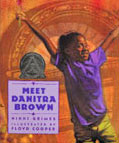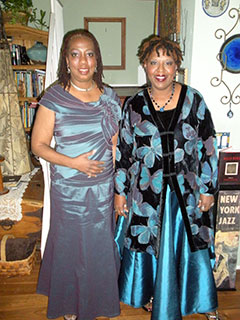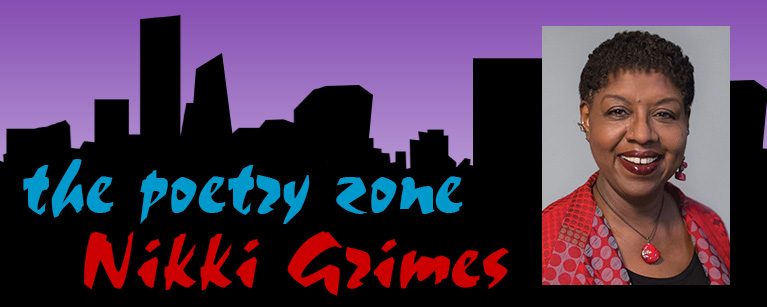 In 1991, I left my job as an editor for Disney Publications to work on my own books, full time. One of the first books I wrote after my exit was a story of friendship titled Meet Danitra Brown.
In 1991, I left my job as an editor for Disney Publications to work on my own books, full time. One of the first books I wrote after my exit was a story of friendship titled Meet Danitra Brown.
When I sat down to write this book, I was very clear about the small stories I wanted to tell, many of them drawn from my own childhood. I was equally clear about my characters, namely the spunky, self-possessed Danitra Brown, and the smart and sensitive Zuri Jackson. You would think, then, that the book would have been a snap to write, yes? But it wasn’t. I poured over the manuscript for weeks, writing and rewriting chapters that didn’t seem to be going anywhere, and I couldn’t figure out why. Finally, I grabbed a highlighter and went though the manuscript, marking those passages that were working, in the hopes that the exercise would give me a clue. And it did.
I carefully reviewed my work-in-progress and noted that each and every one of the passages that were working read like poetry. Ding, ding, ding! This story wanted to be told as a collection of poems! I’m a little slow, but I’m no dummy. I obliged! I’ve been telling stories in suites of poetry ever since.
Strangely, I never stopped to ask myself if one could, or should, write a story in poetry. Was that even a thing? I didn’t know, but I wrote one anyway. Years later, of course, I realized there was, in fact, a very long tradition of storytelling through poetry. I, however, had never read The Iliad or The Odyssey. Instead, I’d stumbled upon the idea of the form—as simplistic as mine may be—out of necessity. I had a story to tell, and my story refused to be told in any other way.
Meet Danitra Brown, which won a Coretta Scott King Honor Award for Illustration, has been a popular title for poetry lovers, and a staple in poetry units, for more than a decade. It was followed by Danitra Brown Leaves Town and Danitra Brown Class Clown.
Fans of the books hold Danitra Brown close to their hearts, and I especially love how real she’s become to young readers. I’ve explained to countless students, over the years, that Danitra is a fictional, composite character. They all nod their heads as if they understand, and then they turn right around and ask, “So, when was the last time you saw Danitra?”
One of my favorite stories to share, in that regard, comes from a young woman who wrote to tell me how special Danitra was in her life.
As a young girl, she’d suffered the loss of her mother. Her grandmother, who took her in, gave her a copy of Meet Danitra Brown. The young girl was convinced this book had been written specifically for her, as the names of the characters in the book and its sequels, matched the names of her own relatives.
The girl grew up, of course, and began to realize her mistake. Nevertheless, she continued to treasure her connection to this character. She thanked me for writing the book, told me how it helped her through a difficult time in her life, and singed the letter “Sincerely, Danitra Brown.”
Well kids, turns out the joke was on me. There really is a Danitra Brown! Love it.

The story of the art is interesting, as well. The book, illustrated by Floyd Cooper, features characters loosely based on myself and my childhood best friend, Debra. When her mother saw the F&G’s, she said, “Oh! I see you sent the illustrators photos of the two of you.” In fact, I hadn’t! Yet, somehow, through an alchemy I don’t quite understand, Floyd had chosen models to represent the characters who closely resembled me and my friend at the ages of those characters. Spooky, huh? That’s happened to me with several different books, and several different illustrators. Weird, but wonderful!
I’ll leave you with one of my favorite poems from Meet Danitra Brown. This is titled “Sweet Blackberry.”
Danitra says my skin’s like double chocolate fudge
’cause I’m so dark.
The kids at school say it another way.
“You so black, girl,” they say,
“at night, people might thin
you ain’t nothin’ but a piece o’ sky.”
I never cry, but inside there’s a hurting place.
I make sure no one sees it on my face.
Then mama tells me, “Next time, honey, you just say
The blacker the berry, the sweeter the juice.”
Now that’s just what I do.
I sure wish I had told them that before.
Those kids don’t bother teasin’ me no more.


